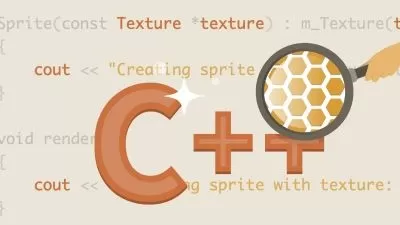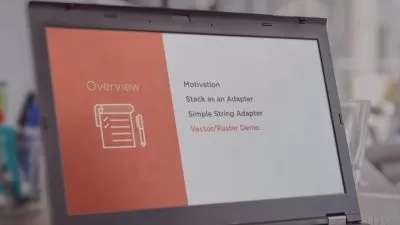C++ Design Patterns: Behavioral
Shaun Wassell
3:29:49
Description
Programmers spend much of their time solving problems, yet they may wind up solving the same problems over and over again. In C++, design patterns can help programmers save their valuable time with classes of programming problems that have similar solutions. Once developers learn these patterns, they can write software more efficiently and make more deliberate software designs. In this course, instructor Shaun Wassell goes in-depth on behavioral design patterns. Shaun begins by explaining design patterns in general and behavioral design patterns in particular. For each behavioral design pattern discussed in this course, he covers the basic idea behind the pattern, what the pattern looks like in code, some real-world examples of how you could use the pattern, and the pattern’s benefits and tradeoffs. Shaun concludes by showing you how some of these behavioral patterns can be combined and some of the benefits and drawbacks of doing so.
More details
User Reviews
Rating
Shaun Wassell
Instructor's Courses"I love seeing people go from earning peanuts to being able to comfortably take their families on multiple vacations — just because they were willing to learn something 'nerdy!'"
Shaun brings nearly 10 years of software development experience to his training. Prior to joining CBT Nuggets, he was a senior full-stack developer. His interest in technology started as a child because he wanted to create video games and his parents bought him GameMakerStudio. When Shaun isn’t creating training, he enjoys gardening, distance running, investing, and learning foreign languages.
Certifications: None
Areas of expertise: Web development, programming, data science

Linkedin Learning
View courses Linkedin Learning- language english
- Training sessions 49
- duration 3:29:49
- English subtitles has
- Release Date 2024/09/20















